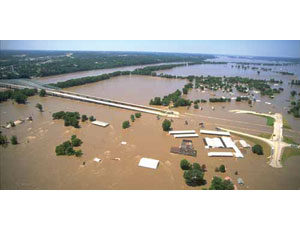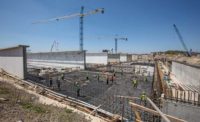The federal government is re-drawing floodplain maps under a deadline that should be pushed back to allow local governments time to evaluate and fix levees. The haste is undue, and the cost of going too fast could be high. Let me explain why.

More than 100,000 miles of levees crisscross our country, ranging from sophisticated systems of concrete floodwalls to simple piles of dirt and sand. Each year, millions of homeowners and businesses rely on this under-resourced daisy chain to protect against floods and rising rivers.
This year is no exception, as the National Weather Service recently announced that nearly one-third of the nation is at risk for flooding.

VINING
The Federal Emergency Management Agency’s remapping schedule, ironically, is now also a threat.
Until 2005, there was no national effort to monitor levees and track their effectiveness against storms. Hurricane Katrina changed that. Since Katrina, with funding by Congress, the U.S. Army Corps of Engineers has led the charge to comprehensively assess our nation’s levees.
As a result, more than 177 levee systems in 16 states have been found to be deficient. Many communities have been notified by the Corps during the past year that their levees are unlikely to withstand a significant flood.
Beyond the challenges these communities face during flood season, if cities cannot bring their levees up to standard within two years, FEMA could redraw floodplain lines on the assumption the levees in question do not exist.
The threats of uninsurability, deflated property values and halted development plans under redrawn flood maps would hamper economic recovery amid the largest downturn since the Great Depression. To citizens who depend on levees to protect them in the event of a flash flood, hurricane or storm, the safety implications of failure are more dire.
The deadline itself is now a hazard.
Forced To Pay Twice?
The two-year timeline and the differing requirements set by FEMA and the Corps pose a challenge. Many cities could be forced to pay for levee system improvements twice. While interim solutions may be put in place in time to meet FEMA standards, many cities also will need to pay for long-term replacement systems in order to meet the higher Corps standards.
This clash creates a dilemma. Does a city invest in higher levels of protection for its citizens and property but miss the FEMA deadline for redrawing? Or should the city build costly interim projects, only to revamp its levees a few years later?
Currently, there is not an official process for FEMA to extend timelines while cities work to make systematic improvements to levee systems. Without a process in place to work through extensions with FEMA, many communities are finding themselves in uncharted territory.
With this in mind, I call on everyone involved to take action.
Dozens of cities across the nation have been, or soon will be, notified that the levees protecting their citizens and property are deficient.


Post a comment to this article
Report Abusive Comment